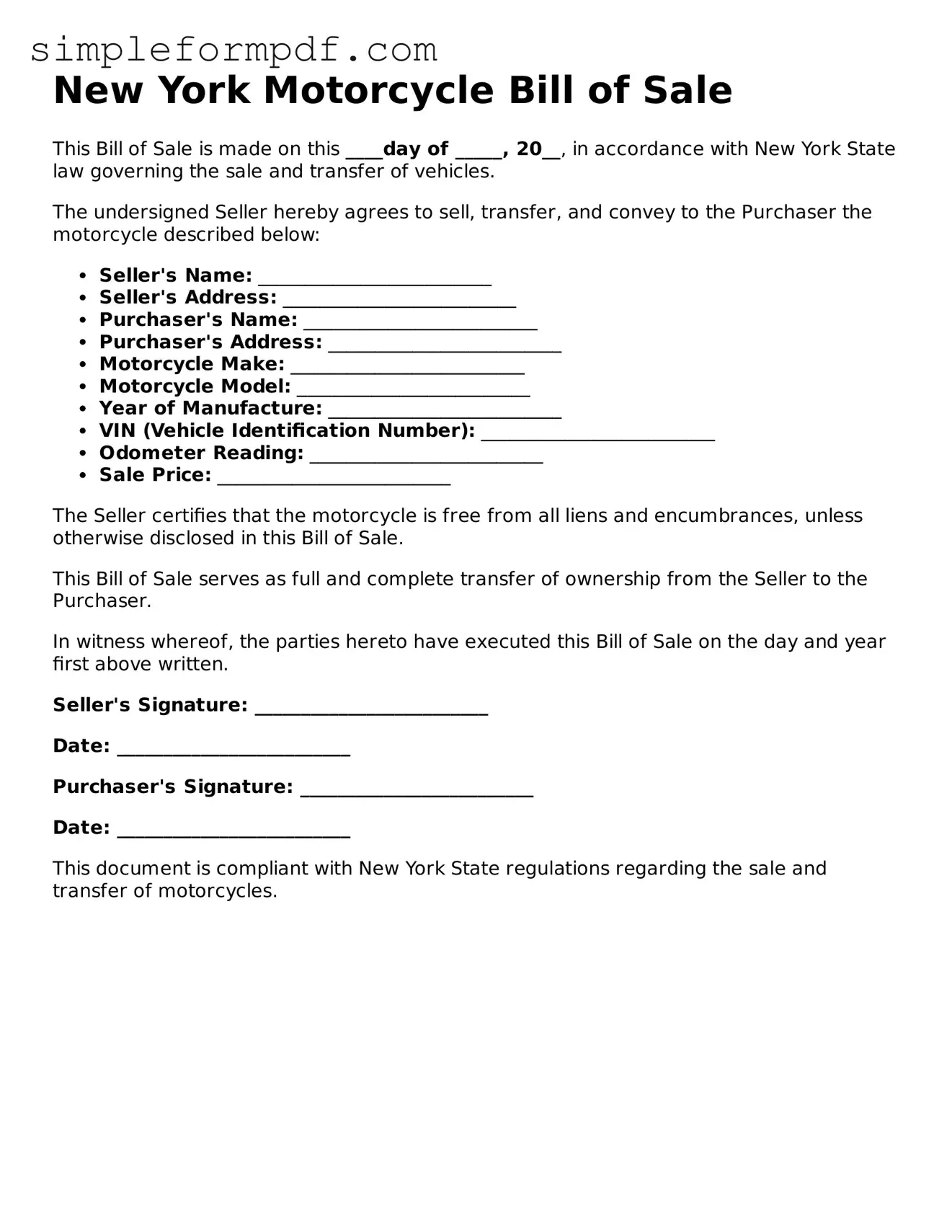New York Motorcycle Bill of Sale
This Bill of Sale is made on this ____day of _____, 20__, in accordance with New York State law governing the sale and transfer of vehicles.
The undersigned Seller hereby agrees to sell, transfer, and convey to the Purchaser the motorcycle described below:
- Seller's Name: _________________________
- Seller's Address: _________________________
- Purchaser's Name: _________________________
- Purchaser's Address: _________________________
- Motorcycle Make: _________________________
- Motorcycle Model: _________________________
- Year of Manufacture: _________________________
- VIN (Vehicle Identification Number): _________________________
- Odometer Reading: _________________________
- Sale Price: _________________________
The Seller certifies that the motorcycle is free from all liens and encumbrances, unless otherwise disclosed in this Bill of Sale.
This Bill of Sale serves as full and complete transfer of ownership from the Seller to the Purchaser.
In witness whereof, the parties hereto have executed this Bill of Sale on the day and year first above written.
Seller's Signature: _________________________
Date: _________________________
Purchaser's Signature: _________________________
Date: _________________________
This document is compliant with New York State regulations regarding the sale and transfer of motorcycles.
